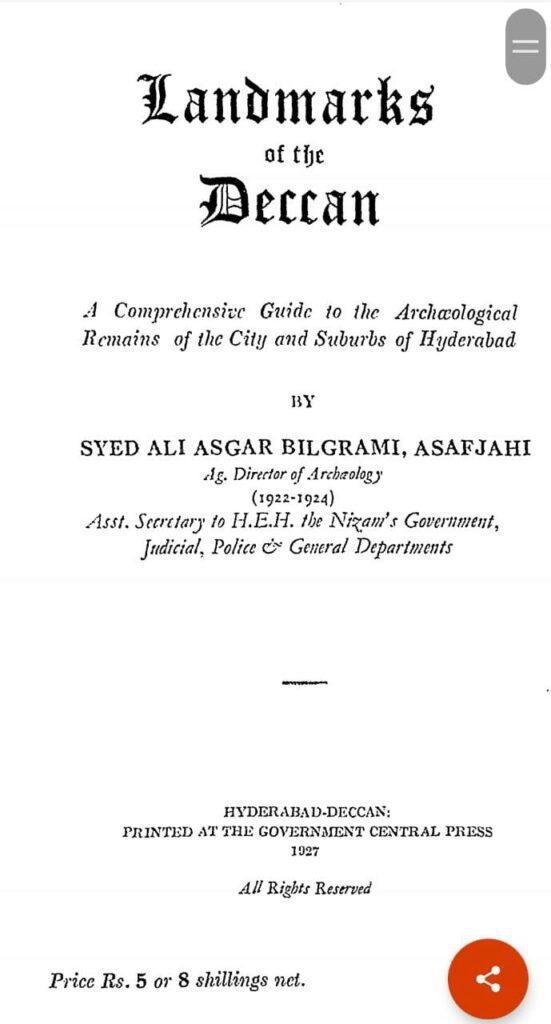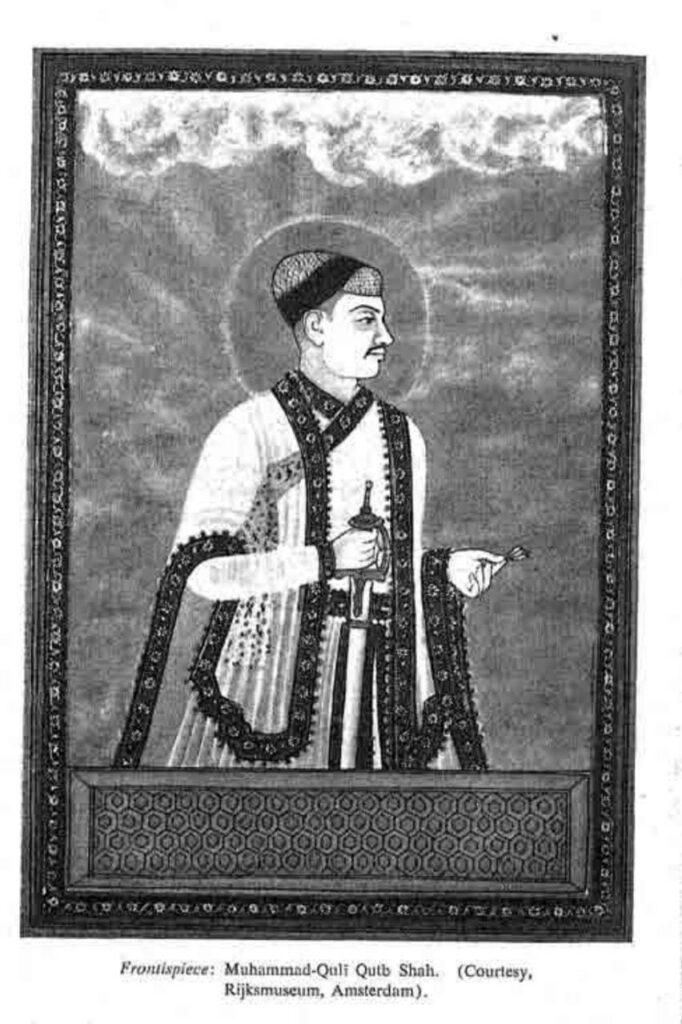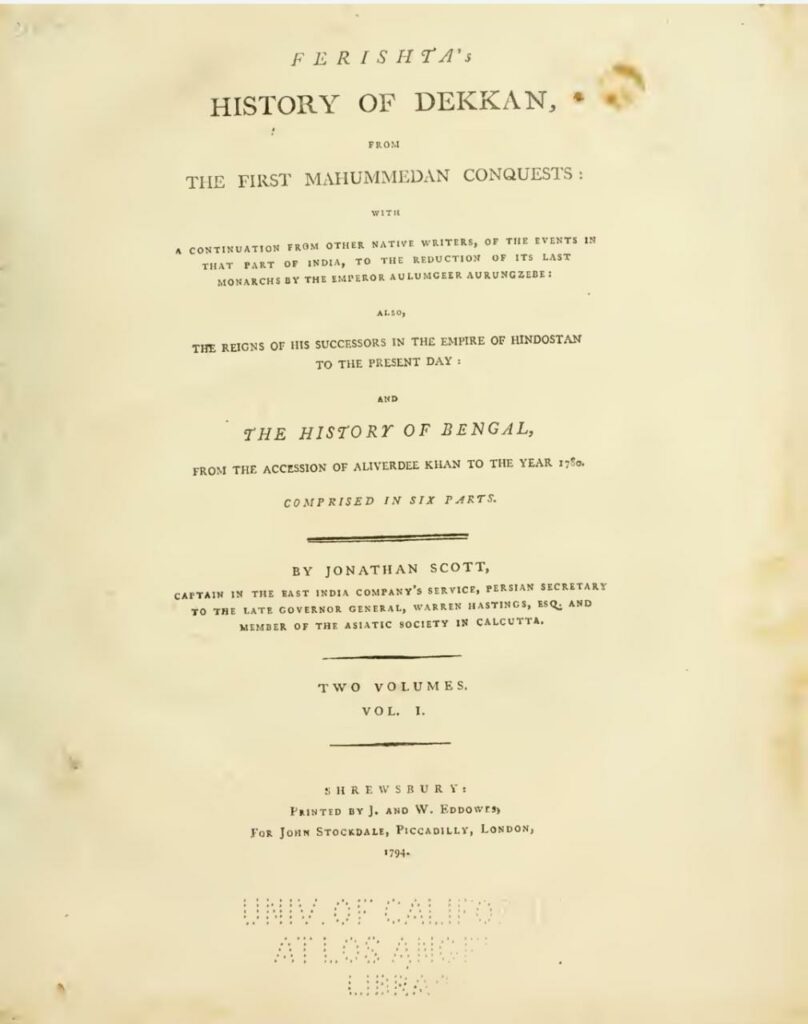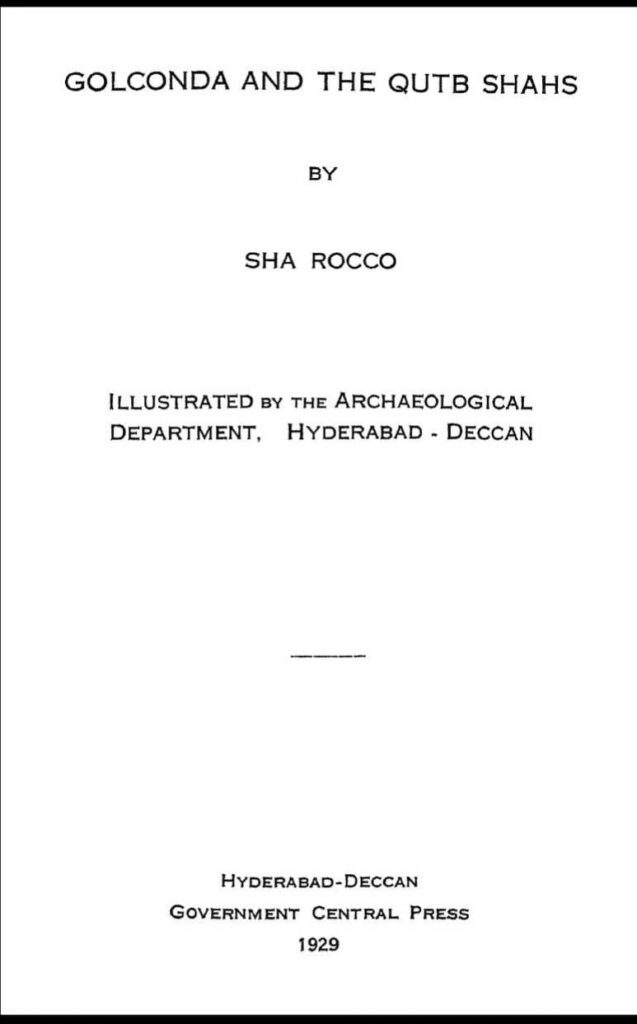Amidst the recent debates on name of the city Hyderabad, we at Avaaz24 tried to analyze the historical evidences regarding it. During our research process, we came across many interesting facts about Hyderabad.
Before we reach the capital Bhagyanagar/Hyderabad, let’s start from its kingdom Golconda.
The Golconda
There is no recorded history of Golconda previous to the year 1364AD. Probably it was a small mud fort in the village Mankhyal. It was under some Hindu princes before it fell to the Rajas of Warangal.
Golconda was initially Gul Kunda [cut like a flower] or Golla Konda [Shepherd’s Hill].
In 1321 AD, Warangal was captured by Muhammad Bin Tughlaq. In 1363 AD, Raja of Warangal Kanhayya Naik wrote to Firoz Shah Tughlaq suggesting campaign against the then Bahmani King Mahmud Shah.
Mahmud Shah got to know the plot beforehand. He promptly marched towards Golconda and made it a part of his Bahmani territory under the name Mahomednagar.
QUTB SHAHS
By 1512 AD imbecility of Mahmud Shah Bahmani’s government became apparent to the world. Then, Sultan Quli, his Amir took over the throne of Golconda under the title of “Qutb Shah”.
Golconda reached its zenith under its 4th ruler Ibrahim Qutb Shah (crowned 1550AD).
Purana Pul Bridge
In 1578AD Ibrahim Qutb Shah, built a bridge on the river Musi.
According to “Tuzuk-e-Qutbshahi”, it was built to ease the nocturnal visits of his son Prince Muhammad Quli to Bhagmathi, a courtesan, who resided at Chichlam, near Shah Ali Banda. As it was built to facilitate the lovers, it was named as ‘Pyar-ana pul’(‘On Love Bridge’).
But the contemporary book, “Tawarikh-e-Farkhunda” by Gulam Qadir Khan Bidri doesn’t mention anything about Bhagmati or Pyar-ana Pul. It refers the bridge as “Pul-e-Narva” [Narva means straight]. In Telugu Narva means a straight causeway.

Syed Ali Asgar Bilgrami in his book “The Landmarks of Deccan – A Comprehensive Guide to the Archaeological Remains of the City and Suburbs of Hyderabad: 1927″ mentions all the above said and adds an interesting note further.
He says that in 1820 A.D, when the famous flood of Musi happened, Maharaja Chandu Lal, Prime Minister of Nizam Sikandar Jah commissioned the repair of the bridge under the charge of Puran Singh Darogha. Thus, Pul-e-Narva got its present name Purana Pul completely eliminating the romantic element of Bhagmati.
Is it Bhagnagar or Bhagyanagar?
Muhammad Quli Qutb Shah, ascended the throne of Golconda in 1580 AD.

As the time passed Golconda became very unhealthy through over population. In 1591AD, the king built a magnificent city a few miles away to avoid the congestion. The city was initially named as “Bhagnagar”.
Bhagmati’s Bhagnagar
Various Historians contemporary to Muhammad Quli mentioned about Bhagmati.
Nizamuddin in his “Tabqat E Akbar Shahi” (1594CE) testified that, “Muhammad Ali Qutub-ul-Mulk, son of Ibrahim after succeeding his father, became so enamored of a Hindu prostitute Bhagmasi by name that he founded a city which he called “Bhagnagar” after her and ordered that one thousand horsemen should always accompany the whore.”

Even Ferishta [Muhammad Qasim Hindu Shah], a 16th CE Persian Court Historian of Bijapur Adil Shahis, in his “Tarikh-i-Firishta” (1609 AD)[Translated as History of Dekkan by Jonathan Scott, 1794 claims it to Muhammad Quli Qutb Shah’s mistress “Bhaug“, a celebrated courtesan and mentions the city as “Bhaugnuggur”.

This view was further supported by Hargrave Jennings(1817-1890), a British Historian under his penname Sha Rocco in his book, “Golconda and Qutb Shahs” 1929AD. He says that, Mahomed Quli became enamored of a beautiful Hindu dancing girl named Bhagmati, to whom he assigned 1000 cavalry as escort. He named his city on her.
But, after her death, the king was persuaded to change the name of the city to Haidarabad, on one of the titles of Ali.
Bhagnagar- the city of Gardens
But according to “Tazkirat- ul-mluk” History of Kings- a history of contemporary dynasties in Deccan, Hindustan and Persia 1540 AD of Rafi-ud-din Ibrahim Shirazi, a contemporary historian of Adi Shahi Dynasty, the whole city is just one large garden. As Bagh meant Garden in Urdu, the city was called Baghnagar “the city of gardens”.
This view seems to be appropriate as there have been a number of gardens in and around the city of Hyderabad, such as Bashir Bagh, Amin Bagh, Bir Ban Bagh, Hardikar Bagh, Bagh Lingampally and Jam Bagh etc.
This view of Baghs or Gardens is supported by historian Harror Khan Sherwani (1891AD) based on travelogues by the French Merchants who visited Hyderabad- Tavernier(1652 AD), Francois Bernier(1667 AD) and Monsieur de Thevenot (1669 AD).
Thevenot says that the common people called the city as “Bagnagar” while the ruling aristocracy and government officers called it “Aider-Abad” (Haidarabad).
Thus they also named the city as Baghnagar, but did not attach it with Bhagmati.
Bhagirati’s Bhagnagar
In 1810 AD, Ghulam Hussian Khan Jauhar’s “Mahanama” added another view to the exiting stories on Bhagnagar.
According to him, Ibrahim Qutb Shah married a lady named Bhagirati during his exile at Vijayanagar before he ascended the throne of Golconda.
She is alleged to be the mother of Mohammed Quli Qutb Shah. Thus Mohammed Quli Qutb Shah, named his new city on his mother Bhagirati’s name as Bhagnagar.
But no other evidence of Bhagirati as Muhammad Quli’s mother does exist.
In consequence, it remains uncertain,till today whether he named it after his lover Bhagmati or his mother Bhagirati.
Bhagnagar to Hyderabad
In 1603 CE, Muhammad Quli’s Iranian Peshwa, Mir Mumin Astrabadi secured an embassy from King Abbas of Iran.
Iranians being unimpressed by the name of the capital, termed on a Hindu Devadasin, changed its name, after the son-in-law of the Islamic Prophet Muhammad Ali Ibn Abi Talib or Hyder Ali.
From then, Persians called it Aider-abad and Muslim nobility named it “Hyderabad”. [Aider~ Hyder ; Abad~ Place].
Farkhunda Buniyad
Adding further, the chronogrammatic title of the city was given in Persian from 1603CE as “Farkhunda Buniyad”. Persian word “Farkhunda” means Fortune or Luck and “Buniyad” means “Foundation”.
Interestingly, the word Fortune in Telugu is “Bhagyamu” and in Sanskrit is “Bhagya”. It implies that sultan may have continued to be faithful to the memory of his first love and kept such a chronogram.
Bhagmati to Hyder Mahal
A local legend says that Bhagmati changed her name to Hyder Mahal after she embraced Islam. Hence the city’s name changed to Hyderabad from Bhagnagar. This story has no historical written evidence.
Did Bhagmati really existed?
Unfortunately, neither Bhagmati’s tomb nor her mortal remains were found in the city, leading to her existence in question.
If at all such a courtesan existed, who was given ample importance by the Monarch why was she not buried in their Imperial Qutb Shahi Tombs on par with other courtesans like Taramati and Premamati?
(The mortal remains of Courtesans Taramati and Premamati, concubines of Sultan Abdullah Qutbshah and Sultan Muhammad Qutbshah are present at Qutb Shahi Tombs).


